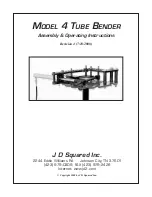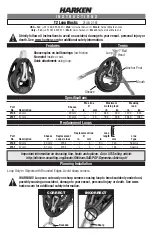
70
User's Guide HDSP System Multiface II
© RME
29.6 General
•
Power supply: external switching power supply, 100 - 240 V AC, 15 Watt
•
Current at 12 Volt operating voltage, unloaded: 720 mA (8.6 Watt)
•
Current at 12 Volt operating voltage, loaded: 1 A (12 Watt)
•
Typical power consumption: 12 Watt
•
Voltage range: DC 8 V – 28 V, AC 8 V – 20 V
•
Dimensions including rack ears (WxHxD): 265 x 44 x 165 mm (10.5" x 1.73" x 6.5")
•
Dimensions without rack ears/handles (WxHxD): 218 x 44 x 155 mm (8.6" x 1.73" x 6.1")
•
Weight: 1.5 kg ( 3.3 lbs)
•
Temperature range: +5° up to +50° Celsius (41° F up to 122°F)
•
Relative humidity: < 75%, non condensing
30. Technical Background
30.1 Lock and SyncCheck
Digital signals consist of a carrier and the data. If a digital signal is applied to an input, the re-
ceiver has to synchronize to the carrier clock in order to read the data correctly. To achieve this,
the receiver uses a PLL (Phase Locked Loop). As soon as the receiver meets the exact fre-
quency of the incoming signal, it is locked. This
Lock
state remains even with small changes of
the frequency, because the PLL tracks the receiver's frequency.
If an ADAT or SPDIF signal is applied to the Multiface, the corresponding input LED starts flash-
ing. The unit indicates LOCK, i. e. a valid input signal (in case the signal is also in sync, the LED
is constantly lit, see below).
Unfortunately, LOCK does not necessarily mean that the received signal is correct with respect
to the clock which processes the read out of the embedded data. Example [1]: The Multiface is
set to 44.1 kHz internally (clock mode Master), and a mixing desk with ADAT output is con-
nected to input ADAT1. The corresponding LED will show LOCK immediately, but usually the
mixing desk's sample rate is generated internally (also Master), and thus slightly higher or lower
than the Multiface's internal sample rate. Result: When reading out the data, there will fre-
quently be read errors that cause clicks and drop outs.
Also when using multiple inputs, a simple LOCK is not sufficient. The above described problem
can be solved elegantly by setting the Multiface from Master to AutoSync (its internal clock will
then be the clock delivered by the mixing desk). But in case another, un-synchronous device is
connected, there will again be a slight difference in the sample rate, and therefore clicks and
drop outs.
In order to display those problems optically at the device, the Multiface includes
SyncCheck
®
. It
checks all clocks used for
synchronicity
. If they are not synchronous to each other (i. e. abso-
lutely identical), the SYNC LED of the asynchronous input flashes. In case they are completely
synchronous, all LEDs are constantly lit. In example 1 it would have been obvious that the LED
ADAT 1 kept on flashing after connecting the mixing desk.
In practice, SyncCheck allows for a quick overview of the correct configuration of all digital de-
vices. So one of the most difficult and error-prone topics of the digital studio world finally be-
comes easy to handle.
The same information is presented in the Multiface's Settings dialog. In the status display
Sync-
Check
the state of all clocks is decoded and shown as simple text (No Lock, Lock, Sync).
Summary of Contents for DSP Multiface
Page 5: ...User s Guide HDSP System Multiface II RME 5 User s Guide Multiface II General...
Page 42: ...42 User s Guide HDSP System Multiface II RME...
Page 43: ...User s Guide HDSP System Multiface II RME 43 User s Guide Multiface II TotalMix...
Page 45: ...User s Guide HDSP System Multiface II RME 45...
Page 67: ...User s Guide HDSP System Multiface II RME 67 User s Guide Multiface II Technical Reference...
Page 74: ...74 User s Guide HDSP System Multiface II RME 31 Diagrams 31 1 Block Diagram Multiface II...
Page 76: ...76 User s Guide HDSP System Multiface II RME...
Page 77: ...User s Guide HDSP System Multiface II RME 77 User s Guide Multiface II Miscellaneous...











































